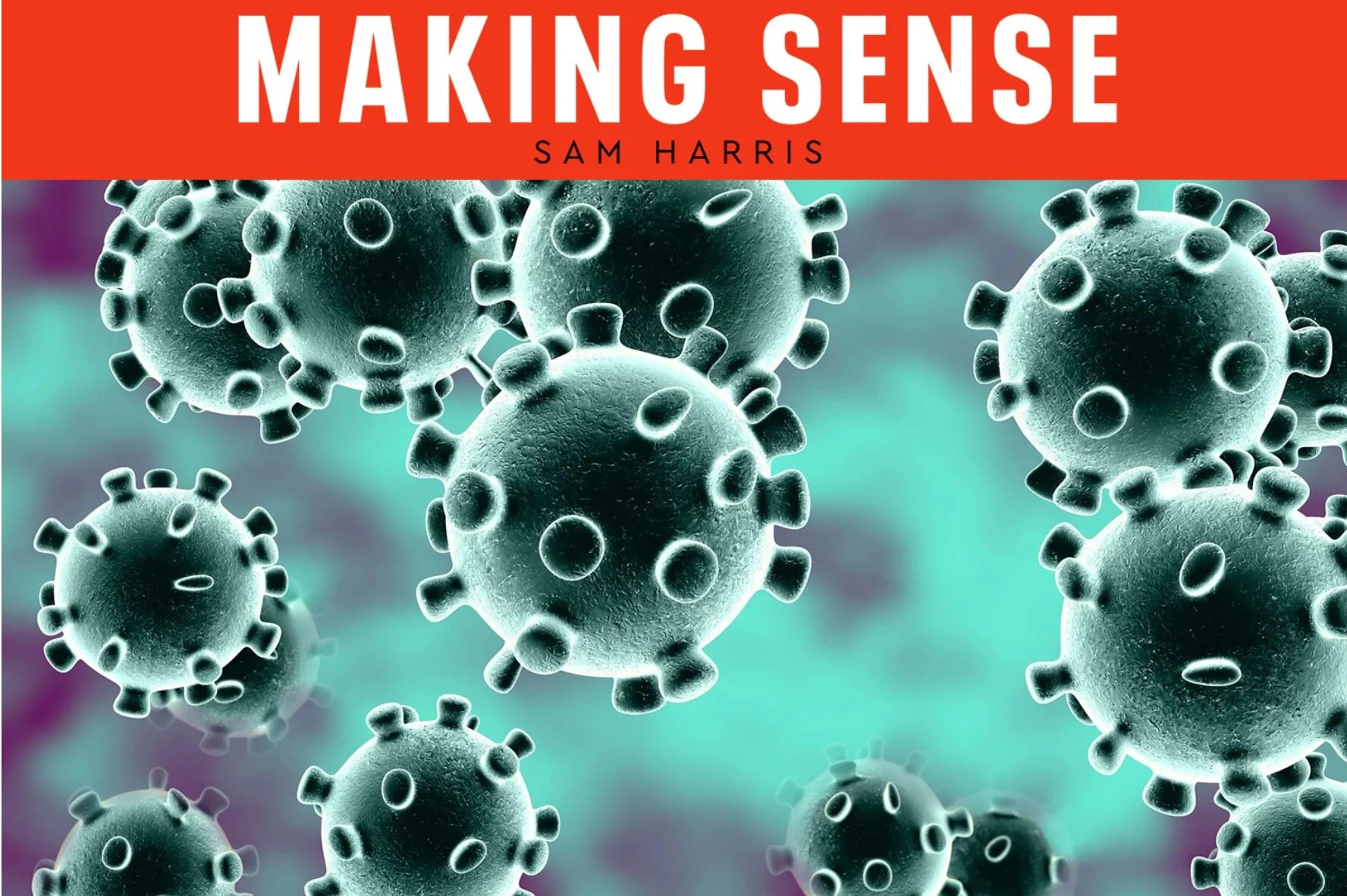Sam Harris - Early Thoughts on a Pandemic
In the age of coronavirus, we see panic, discourse, politically-charged distrust in the media, and confusion thriving alongside the disease. How do we combat this disease? Should we go to work, or to school? Or should we throw caution to the wind? In Sam Harris’ March 10 podcast of “Making Sense”, he and Dr. Amesh Adalja do their best to make sense of one of the most confusing and concerning times in recent history.
Dr. Amesh Adalja, an infectious disease critical care and emergency medicine physician who has focused his entire career on infectious disease and pandemic preparedness, discusses the virus in-depth with Sam Harris. Harris and Adalja seek to find a balance between easing people’s concern and bringing attention to the severity of the virus.
They begin the podcast by putting the Virus into context. Adalja explains a worse case epidemic scenario would look like a “bird flu that mutates and becomes highly infectious among people, and has something like a 60 percent mortality rate. A species annihilating plague that we know is possible.” An alternative worse-case scenario of coronavirus is that it is merely a “dress rehearsal” of what could happen.
Of course, a 60 percent mortality rate is nowhere near the mortality rate of the coronavirus. Adalja mentions that he is sure many of us have seen the numbers 1 percent, 2 percent, 3 percent mortality rate circling the internet. According to Adalja, these numbers are inaccurate because of severity bias, i.e., we are not getting a large enough sample size. He explains that “the best estimate I think is derived mostly from the South Korean data where there’s been extensive testing, the most per capita testing that has been done in any country where they actually have drive-through testing centers. There you are seeing the case fatality rate at 0.6.” However, he adds that there is still a lot of fluctuation and uncertainty in these tests as well.
Adalja also addresses the “experiments” of the cruise ships that were contaminated with coronavirus. He explains that there was a severe age bias on the cruise ships. The people on the ships are going to be people who are older, and/or with medical conditions.
He also mentions that no one is “safe” from the virus. This virus has a higher case fatality so there will be deaths of people who are in a healthy demographic, but it will not be common or average. There will be many people who just have a cough, the sniffles, or just common cold symptoms, who are carrying the virus. This is why from an evolutionary perspective the disease is so effective. The mild cases are “serving as vectors” for the disease. This is a respiratory disease that spreads through coughs and sniffles. It can be transmitted from surfaces that people touch. He explains that “airborne spread is really not what we are seeing”. This disease will not be transmitted to you if you were in the same air space as an individual who had the disease. The primary way the disease is spread is through sneezing and coughing. Those droplets from a sneeze or cough can live on a surface for up to nine days on a surface, but some conditions affect the viability of a virus.
Adalja brings to our attention that “most people are going to get it”. Knowing you are going to get the same number of cases, what is crucial is changing the “epidemic curve: the number of cases over time”. You still have the same number of cases, but you spread them out over time. “This is a lot easier for communities to cope with”. An example of this would be bed space in a hospital or any other type of limited recourse. This is why it is so important to close schools, ban sport events, and refrain from in-person meetings. Social distancing. Adalja recommends that if you are at high risk, then you should make the proper adjustments to this virus.
This podcast will help you make sense of what is really going on with the virus, and how we should all prepare.
Link to podcast here

